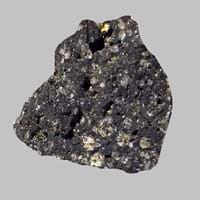Aplite and Borolanite
Definition
Definition
Aplite is a fine-grained granite composed mainly of feldspar and quartz
Borolanite is a variety of Nepheline Syenite and belongs to igneous rocks and contains nepheline-alkali feldspar pseudomorphs which occur as conspicuous white spots in the dark rock matrix
History
Origin
Iran
Scotland
Discoverer
Unknown
Unknown
Etymology
From German Aplit, from Greek haploos simple + -ite
From Alkalic Igneous complex near Loch Borralan in northwest Scotland
Class
Igneous Rocks
Igneous Rocks
Sub-Class
Durable Rock, Hard Rock
Durable Rock, Medium Hardness Rock
Family
Group
Plutonic
Plutonic
Other Categories
Fine Grained Rock, Opaque Rock
Fine Grained Rock, Opaque Rock
Texture
Texture
Granular, Graphic
Granular
Color
Black, Grey, Orange, Pink, White
Brown, Buff, Cream, Green, Grey, Pink, White
Maintenance
More
Less
Durability
Durable
Durable
Water Resistant
Yes
Yes
Scratch Resistant
Yes
No
Stain Resistant
Yes
No
Wind Resistant
Yes
Yes
Acid Resistant
Yes
Yes
Appearance
Veined or Pebbled
Banded and Foilated
Uses
Architecture
Interior Uses
Bathrooms, Countertops, Decorative Aggregates, Entryways, Floor Tiles, Homes, Hotels, Kitchens, Stair Treads
Countertops, Decorative Aggregates, Flooring, Homes, Interior Decoration
Exterior Uses
As Building Stone, As Facing Stone, Bridges, Paving Stone, Near Swimming Pools, Office Buildings, Resorts
As Building Stone, As Facing Stone, Paving Stone, Garden Decoration, Office Buildings
Other Architectural Uses
Curbing
Curbing
Industry
Construction Industry
As Dimension Stone
As Dimension Stone, Cement Manufacture, Construction Aggregate, for Road Aggregate, Landscaping, Making natural cement, Manufacture of Magnesium and Dolomite Refractories, Production of Glass and Ceramics
Medical Industry
Not Yet Used
Not Yet Used
Antiquity Uses
Artifacts, Monuments, Sculpture, Small Figurines
Artifacts
Other Uses
Commercial Uses
Curling, Gemstone, Laboratory bench tops, Small Sculptures, Tombstones
Cemetery Markers
Types
Types
Not Available
Not Available
Features
Available in lots of colors, Available in Lots of Colors and Patterns, Is one of the oldest rock
Application of acids on the surface causes cloudy frosting, Available in Lots of Colors and Patterns, Dissolves in hydrochloric acid, Is one of the oldest rock
Archaeological Significance
Monuments
Used
Used
Famous Monuments
Data Not Available
Data Not Available
Sculpture
Used
Used
Famous Sculptures
Data Not Available
Data Not Available
Pictographs
Not Used
Used
Petroglyphs
Not Used
Used
Figurines
Used
Used
Fossils
Absent
Absent
Formation
Formation
Aplites belong to intrusive igneous rocks which are mostly quart and alkali feldspar and are formed from residual eutectic granitic liquids and represent the final crystallization products of magma.
Borolanites are formed due to alkaline igneous activities and are generally formed in thick continental crustal areas or in Cordilleran subduction zones.
Composition
Mineral Content
Amphibole, Biotite, Feldspar, Hornblade, Micas, Muscovite or Illite, Plagioclase, Pyroxene, Quartz
Albite, Amphibole, Biotite, Cancrinite, Feldspar, Hornblende, Plagioclase, Pyroxene, Sodalite
Compound Content
Aluminium Oxide, CaO, Iron(III) Oxide, FeO, Potassium Oxide, MgO, MnO, Sodium Oxide, Phosphorus Pentoxide, Silicon Dioxide, Titanium Dioxide
Aluminium Oxide, CaO, Iron(III) Oxide, FeO, Potassium Oxide, MgO, MnO, Sodium Oxide, Phosphorus Pentoxide, Silicon Dioxide, Titanium Dioxide
Transformation
Metamorphism
Yes
Yes
Types of Metamorphism
Burial Metamorphism, Cataclastic Metamorphism, Hydrothermal Metamorphism, Regional Metamorphism
Regional Metamorphism
Weathering
Yes
Yes
Types of Weathering
Chemical Weathering, Mechanical Weathering
Chemical Weathering, Mechanical Weathering
Erosion
Yes
Yes
Types of Erosion
Chemical Erosion, Coastal Erosion, Wind Erosion
Wind Erosion
Properties
Physical Properties
Hardness
6.5
5.5-6
Grain Size
Very fine-grained
Fine Grained
Fracture
Not Available
Conchoidal to Uneven
Streak
White
White
Porosity
Less Porous
Less Porous
Luster
Dull to Pearly to Subvitreous
Greasy to Dull
Compressive Strength
130.00 N/mm2
16
150.00 N/mm2
14
Cleavage
Not Available
Poor
Toughness
Not Available
Not Available
Specific Gravity
2.6
2.6
Transparency
Opaque
Translucent to Opaque
Density
2.6 g/cm3
2.6 g/cm3
Thermal Properties
Specific Heat Capacity
0.79 kJ/Kg K
16
Not Available
Resistance
Heat Resistant, Wear Resistant
Heat Resistant, Impact Resistant, Wear Resistant
Reserves
Deposits in Eastern Continents
Asia
China, India, Iran, Saudi Arabia, Sri Lanka, Taiwan, Thailand, Turkey, Vietnam
Indonesia, Iran, Russia, Saudi Arabia, Sri Lanka, Taiwan, Thailand, Turkey, Turkmenistan, Vietnam
Africa
Angola, Egypt, Madagascar, Namibia, Nigeria, South Africa
Angola, Egypt, Madagascar, Namibia, Nigeria, South Africa
Europe
Austria, Belgium, Finland, France, Germany, Italy, Norway, Sardinia, Spain, Switzerland, The Czech Republic, Venezuela
Andorra, Finland, France, Great Britain, Italy, Norway, Portugal, Spain, Sweden
Others
Not Yet Found
Greenland
Deposits in Western Continents
North America
Canada, USA
Canada, USA
South America
Not Yet Found
Brazil, Chile, Colombia, Uruguay, Venezuela
Deposits in Oceania Continent
Australia
Not Yet Found
New Zealand, Queensland, South Australia, Tasmania, Western Australia
All about Aplite and Borolanite Properties
Know all about Aplite and Borolanite properties here. All properties of rocks are important as they define the type of rock and its application. Aplite and Borolanite belong to Igneous Rocks.Texture of Aplite is Granular, Graphic whereas that of Borolanite is Granular. Aplite appears Veined or Pebbled and Borolanite appears Banded and Foilated. The luster of Aplite is dull to pearly to subvitreous while that of Borolanite is greasy to dull. Aplite is available in black, grey, orange, pink, white colors whereas Borolanite is available in brown, buff, cream, green, grey, pink, white colors. The commercial uses of Aplite are curling, gemstone, laboratory bench tops, small sculptures, tombstones and that of Borolanite are cemetery markers.
|
||
|
||
|










